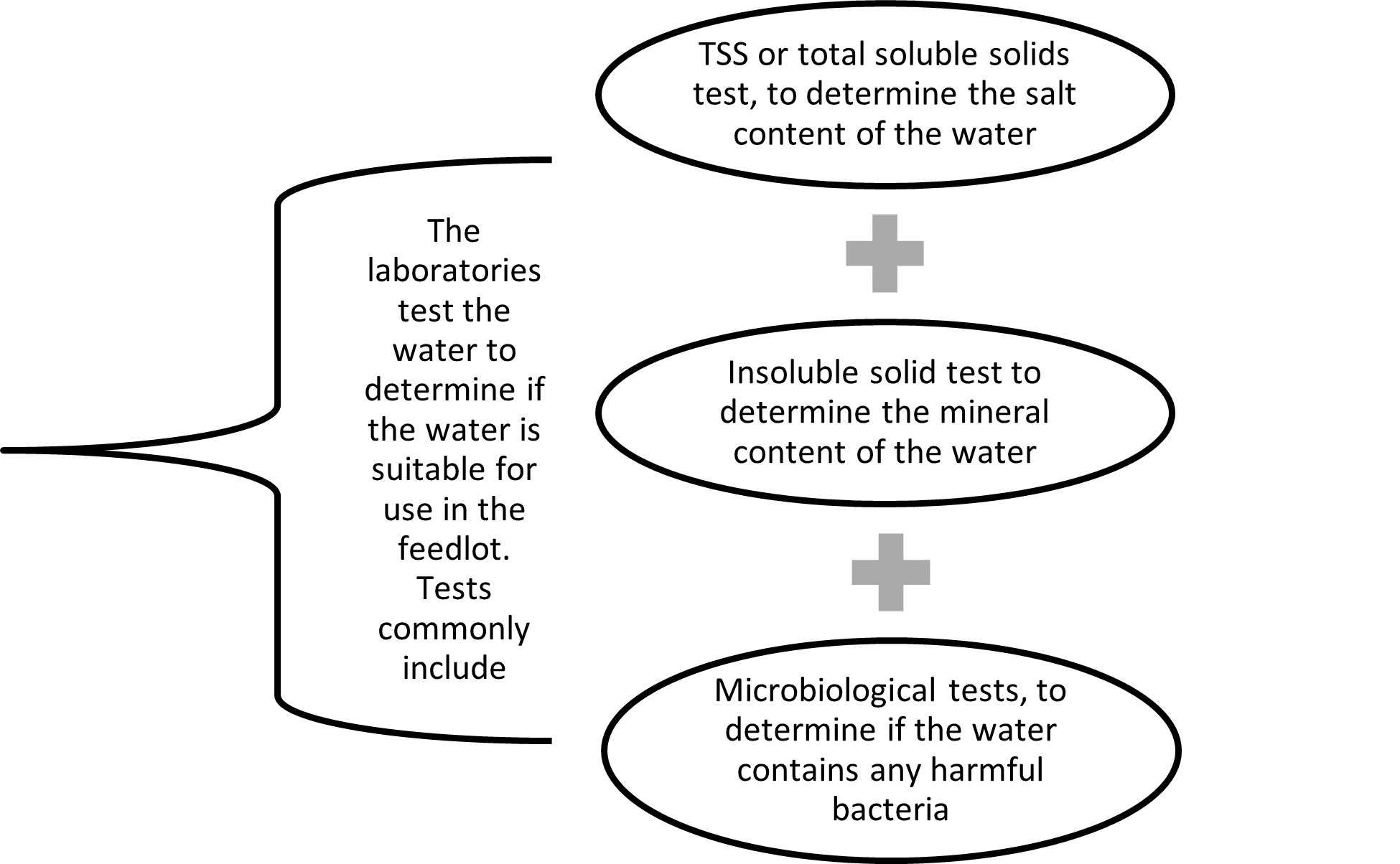To determine the collective water consumption of the cattle in a feeding pen or a feed bunker one needs to be firstly aware of how much water was given to the cattle in each pen. Normally water troughs are refilled once a day after cleaning and a feedlot manager should be well aware then of how much water was left in each trough before cleaning and how much water each trough contains.
Many producers overlook the importance of water availability as it relates to bunk management, including the amount of water, space provided, and the location of water sources. Problems that limit water intake also can limit feed intake, and this, in turn, limits overall animal performance. Poor water quality or lack of water can cause cattle to go off and feed quickly.
Feed callers need to recognise this problem before making any drastic changes in the amount of feed offered. In free-stall barns, 3 inches of linear space per cow and one watering space (or 2 feet of tank perimeter) for each 15 to 20 cows are recommended. A water depth of 6 to 8 inches is suggested to help keep the water fresh and easier to clean because less debris accumulates. As temperature and humidity go up, more water is required. During months of hot weather, water supply becomes an important issue. Adding water tanks for the summer can help in the feedlot.
The following table gives an indication of the amount of water needed per head of cattle per day at different temperatures.
Water requirements of livestock, excluding waste, and assuming that the water is clean and palatable.
|
Class of Livestock |
Requirement(R/animal/day) |
|
Cattle |
|
|
Cow |
40 to 50 |
|
Sheep |
|
|
Dry ewe |
8 |
|
Pigs |
|
|
Dry sow |
5 to 9 |
Determining Water Quality for Water Troughs
In the same manner that feed blends and ingredients are assessed the quality of the water to be used in the feedlot should also be assessed. Water quality is assessed by regularly taking samples of the water at the source and sending these samples for analysis to independent laboratories.

Decisions on whether a water cleaning system and the type of system needed can only be made using recommendations from laboratories after the testing of water samples. Water quality should be assessed at least once every six months and more often if any problems are noted.
When taking water samples always use a clean sterilised plastic container and take the samples in such a manner to avoid contamination the sample. Always fill the sample container right to the top and seal the container tightly with a lid. Note the time and date on the container as well as where the sample was taken. It is good practice to always take two samples. One for testing and one kept as reference in case retesting is required.
Why Water Quality is Important to Animals:
Water is the life-giver. No feedlot can be successful if the quality and quantity of water given to cattle are insufficient. Dirty water is a source for disease organisms, and disease can spread rapidly if animals drink from the same trough.
Sick animals must always be isolated, and the trough disinfected and cleaned. Poor quality water leads to a reduction of water intake, and thereby a reduction of feed intake causing slower rates of gain.
Why Freshness of Feed Is Important to Animals:
No feedlot can be successful if the cattle in the feedlot don’t maintain sufficiently high levels of daily dry matter (DM) intake to ensure a constant weight gain. As we discussed earlier a range of different feed blends is used within the feedlots each with its own unique characteristics to perform certain functions. If for any reason any of these blends or the ingredients used on the blends is of an inferior quality the rate of weight gain necessary for the cattle to achieve in order to ensure the profitability of the enterprise will not be obtained.
Rations should be fresh, palatable, and uniformly nutritious. Spoiled or mouldy feed ingredients should be discarded; this helps minimise ration contamination and the potential for reduced DM intake. Unfortunately, discarding spoiled feedstuffs is not always common practice. In a recent study, growing steers were fed high silage rations, which contained 90.0% well-preserved corn silage or 67.5% well-preserved corn silage and 22.5% spoiled corn silage, for example, silage from the original top 3 feet in an unsealed bunker silo. Steers receiving the ration with the spoiled silage had significantly lower DM intake and lower organic matter, protein, and fibre digestibility. This led to reduced weight gain and can therefore negatively affect the profitability of the feedlot enterprise.